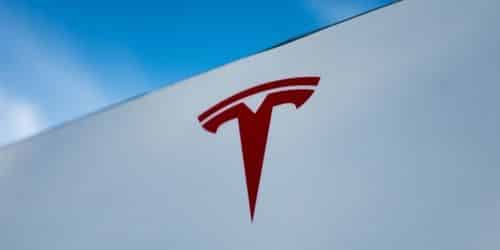While Tesla’s automobile business generates the majority of its revenue, Tesla also make money from energy storage and regulatory credits, according to a Forbes report. Tesla’s net income in 2021 was $5.51 billion, a 665 percent increase over its net income of $721 million in 2020. All of this prompts the question, “Will this trend continue?” Before you contemplate investing in Tesla, make sure you understand how the company makes money.
Tesla Inc. (TSLA) has rapidly evolved into one of the world’s largest all-electric vehicle firms by selling cars and pickup trucks in the United States, China, and other nations around the world. It has even surpassed Toyota as the world’s most valuable automaker in terms of market capitalization. The Tesla automotive division generates the vast bulk of sales and money for the Austin-based corporation.
Other significant automakers developing and marketing electric vehicles, including General Motors Co. (GM), China-based Nio Inc. (NIO), and German-based automakers Volkswagen AG (VOW3) and Daimler AG, are challenging Tesla (DMLRY).
Who Owns Tesla?
Elon Musk, an early investor and Tesla CEO, is the largest stakeholder, holding 21.7% of the stock. Baillie Gifford & Co. (7.7%), FMR LLC (5.3%), Capital Ventures International (5.2%), T. Rowe Price Associates (5.2%), and Capital World Investors (5%) are among the other significant shareholders. Larry Ellison (co-founder and CEO of Oracle) is another significant stakeholder with a 1.7% interest.
What Does Tesla Do?
Tesla is a renewable energy firm focusing on creating and selling its electric vehicle lineup. The Roadster variant was introduced in 2008. However, it was immediately discontinued. The “Model 3” launch in 2017 was a significant success for the company.
However, despite having a cult-like following, Tesla continues to have issues with its products and manufacturing capacity. The corporation manufactures various facilities worldwide, including China’s recently built “Gigafactory”. (Britespanbuildings)
How Does Tesla Work?
Tesla has a broad business model, with its auto section as its flagship. It does, however, manufacture a variety of sustainable energy goods. Tesla’s “Powerwall” is an example of Tesla technology used to power homes and businesses.
China is the company’s fastest-growing market, and it is expanding globally. Tesla will join the S&P500 in December 2020. When the epidemic hit, ordinary investors flocked to stocks, notably Tesla, sending its market cap skyrocketing.
How Does Tesla Make Money?
Tesla makes money by selling EVs, providing EV repair, and marketing revolutionary clean energy solutions. Telsa also makes money by collecting deposits for future EVs and energy products. There’s also the Bitcoin investment. Let’s take a closer look at how Tesla makes money.
#1. Vehicle sales
Tesla produces various EV models, the most prominent of which is the Model S. Instead of the traditional go-to-market method of selling through dealers, the sales and marketing strategy has been direct sales to consumers.
#2. Servicing
Tesla provides servicing for its EVs as well as its energy solutions. Tesla owners can only service their vehicles at authorized Tesla Service centers because it is the only recommended servicing agency.
The company also provides maintenance and installation for its green energy solutions, such as the Powerwall. Tesla’s servicing income increased by 91% yearly to $1.65 billion in 2019.
#3. Alternative energy sources
Tesla also creates one-of-a-kind green energy solutions for homes and businesses. It makes products such as the Powerwall, Powerpack, and Solar Roof. However, the company ceased production of its Solar Roof due to supplier issues.
#4. Public Charging
Tesla charges a fee to utilize its nationwide and international Supercharger Network. In the United States, it costs roughly $20-$25 to fully charge an 85kWh Tesla Model S at a Tesla Supercharger.
#5. Deposits
Tesla accepts deposits for items such as the “Cybertruck” and “Roadster,” charging Tesla clients for the opportunity to acquire the car later. However, neither of these products has been delivered by the company.
#6. Carbon Credits
Because Telsa is a manufacturer of electric vehicles, a significant portion of their revenue, approximately 20%, comes from earning carbon credits from several US government renewable energy schemes.
These carbon credits are marketable certificates that grant firms permission to emit/pollute a certain amount of CO2 into the environment.
Tesla sells roughly $279-679 million in carbon credits to other manufacturers each quarter, including Fiat Chrysler and General Motors.
Tesla has indicated that carbon credit sales will continue to fluctuate and fall over time.
#7. Bitcoin
Tesla purchased $1.5 billion in Bitcoin in early 2021, when one Bitcoin was worth between $30 and $50,000. The automaker transferred funds not required for operating liquidity from its traditional banking accounts into Bitcoin to “maximize returns on our cash.”
It was significant news on Wall Street and in crypto since it was perceived as a significant endorsement of Bitcoin and cryptocurrencies from a publicly traded US firm. It also hinted that it would take Bitcoin as payment at some point in the future.
What are Tesla’s Most Recent Developments?
On February 21, 2022, a German newspaper stated that regulators were looking into Tesla’s Autopilot system. The technology’s safety, which acts as an automated lane-changing system in the automaker’s vehicles, is being probed by German motor vehicle regulators. Tesla is also under investigation by the National Highway Traffic Safety
Administration following reports of “phantom braking” of the company’s vehicles at high speeds, a potential malfunction in which the automated braking system applies the vehicle’s brakes to avoid a collision, but there is nothing to collide with.
The California Department of Fair Employment and Housing, a California regulatory body, sued Tesla on February 10, 2022, for alleged racial discrimination and harassment. According to the claim, Tesla overlooked years of protests from Black workers at its primary production factory in Fremont, California.
Reuters reported on February 3, 2022, that Tesla was recalling 817,000 vehicles in the United States due to a malfunction of the audio seatbelt reminder signal in some vehicle models. According to the article, Tesla will launch an over-the-air software upgrade to remedy the issue.
Future expansion
New markets and new business models. Tesla is experiencing the most growth in China, thanks to new models such as the Tesla Cybertruck and Semi Truck.
During the pandemic outbreak in 2022, China shut down its Shanghai Gigafactory. As a result, output and delivery times have slowed. However, the Gigafactory’s closure did not appear to impact Tesla’s quarterly earnings report or stock price.
Elon Musk is still the business’s CEO; however, he stepped down as chairman of the board in October 2018 following his controversial tweet suggesting he was willing to take the company private for $420 per share.
Tesla’s Supply Chain Strategy
Tesla’s products contain thousands of purchased parts supplied from hundreds of suppliers worldwide. Tesla has established close relationships with suppliers of crucial parts like battery cells, electronics, and sophisticated vehicle assemblies.
Specific components supplied by these suppliers are shared or similar across several product lines, allowing Tesla to benefit from economies of scale pricing efficiencies.
Like most automakers, Tesla’s supply chain strategy relies on getting components and systems from a single supplier. Where numerous sources for specific vital components are available, Tesla attempts to qualify various suppliers to reduce production risks due to supply disruptions. The following list provides an overview of Tesla’s suppliers.
Tesla also mitigates risk as part of its supply chain strategy by keeping safety stock for crucial parts and assemblies and die banks for components with long procurement lead times.
Aluminum, steel, cobalt, lithium, nickel, and copper are among the raw materials used in Tesla products. Pricing for these materials is determined by market conditions and may fluctuate as a result of variables outside Tesla’s control, including supply and demand and market speculation. Tesla wants to create a rock-solid supply chain strategy and execute long-term contracts for such materials at competitive prices.
Read Also: Common Mistakes People Make When Planning a Supply Chain
Tesla wants to minimize its carbon footprint by making its supply chain and business strategy more sustainable. It intends to compensate suppliers for providing energy and emissions data. Furthermore, Tesla only uses materials that are responsibly manufactured.
Tesla defines responsible sourcing as increasing the proportion of materials sourced directly from suppliers and those closest to its plants (supply chain localization), and continuing to source globally to contribute to improving local circumstances in its sourcing communities.
Its suppliers must demonstrate a commitment to responsible sourcing in their supply chains and offer evidence of management systems that promote social, environmental, and sustainability best practices in their operations.
Tesla has already begun evaluating which materials and processes in its supply chain are essential emitters to prioritize engagement and projects to reduce these emissions.
Tesla has a high level of vertical integration in its business model and direct sourcing ties, which means it is better positioned than others to manage upstream emissions.
Who are Tesla’s Competitors?
Many other automakers are entering the EV market, offering Tesla significant competition.
Rivian, Lucid, and Nio, as well as long-standing Ford and General Motors, are all vying for Tesla’s market share.
Tesla has a tremendous expansion runway ahead of it.
Tesla’s core electric vehicle business has enormous growth potential. Consider that at the end of 2021, the percentage of all-electric or plug-in hybrid vehicles on the road is less than 2%.
Tesla has growth opportunities outside its existing electric car and energy generation/storage businesses. The introduction of its Semi Truck is on the horizon.
On October 6, Tesla CEO Elon Musk announced that the manufacture of this electric Class 8 truck, which has a 500-mile range, has begun. He stated that PepsiCo will receive its first deliveries (number not mentioned) on December 1.
Tesla’s Report on Diversity and Inclusion
As part of our effort to raise awareness about the importance of diversity in the workplace, we provide investors with a view into Tesla’s transparency and dedication to diversity, inclusiveness, and social responsibility. We reviewed the data Tesla discloses to make how it reports the diversity of its board and staff to assist readers in making informed purchase and investing decisions.
A table of potential diversity metrics is provided below. It indicates if Tesla releases data on the diversity of its board of directors, C-Suite, general management, and overall employees, as shown by a. It also demonstrates if Tesla breaks down those reports to reveal its diversity by ethnicity, gender, ability, veteran status, and LGBTQ+ identity.
Conclusion
Should you put money into Tesla? The stock was recently split to make it more affordable to regular investors. There are also many eyes on the electric vehicle market as Tesla’s vehicle sales climb yearly. If you believe in clean energy and that electric vehicles and green energy are the way of the future, you should consider investing in Tesla.
If you want to profit from Tesla and electric vehicle stocks, artificial intelligence (AI) is the technology to use.
Related Articles
- What Is Shares Outstanding: Definition & Understanding Its Calculation
- TESLA SOLAR: Panels, Powerwall, & Solar Roof 2022 (Updated)
- Brand Strategy: How to Develop an Effective Brand Strategy with Examples
- Business Valuation: All you need to know [Detailed Guide]
- HOW TO VALUE A BUSINESS: Detailed Guide






